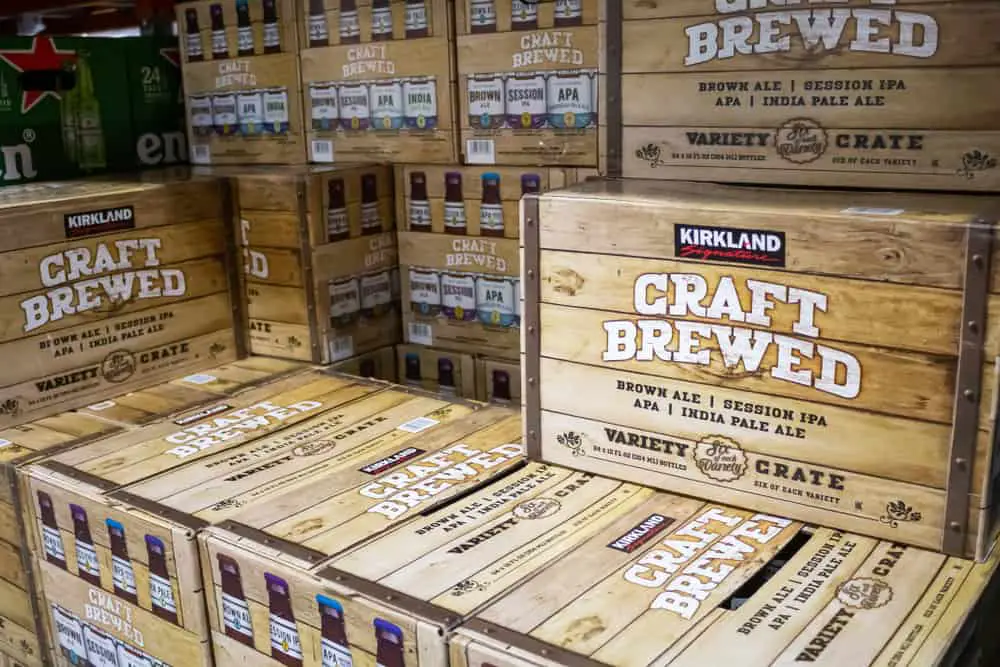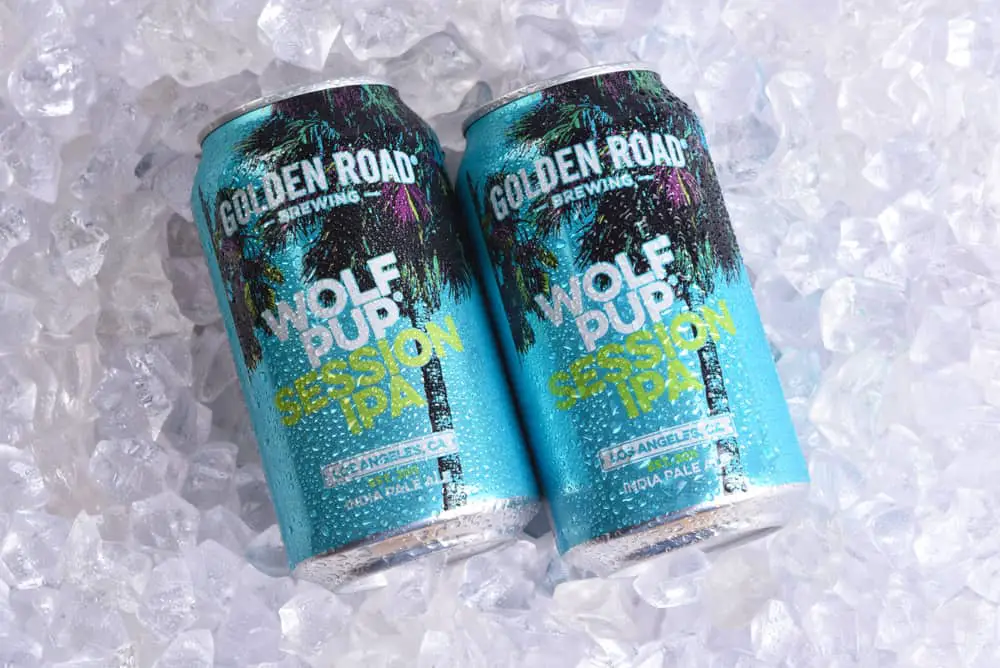The craft beer movement has been expanding rapidly in the past few years, and as a result, so has the number of labels we have to describe different styles of beer.
One that has appeared recently is “session IPA”, a sub-species of the current darling of craft beer lovers everywhere, the IPA. But what is a session IPA? How is it different from a regular IPA? And what can you expect when you try one?
Here, we answer discuss these issues and more as we answer the question, what is a session IPA?
If you want a preview of some of the stuff we’re going to be talking about – as well as a couple of alternative views on the subject – you can check out this video before reading on.
The cultural context
The concept of a “session” beer comes from the British tradition of sitting down for a drink with friends in a pub, and in this cultural context, the idea isn’t to have one or two, it’s to have “a few”.
The aim is not to get drunk; on the contrary, it’s to stay sober and remain capable of holding a conversation, in which case, it’s preferable to avoid imbibing anything too strong – and a session beer is one that’s brewed with this in mind.
In short, a session beer is one that you can comfortably drink several pints of during a “session”, which means the main distinguishing feature of these beers is low alcohol content; in Britain, session beers are generally regarded as having an AVB of around 3-4.5%.
You may hear people claim that something at 5% ABV or above can be a session beer because they can sit and drink five or six of them in a session. But that’s missing the point.
Plenty of people can handle six pints of 5%+ beer, there’s nothing to boast about there. But the fact that you can put away six of them without falling over still doesn’t qualify the beer as “session”.
The First World War connection
But where does the term “session” actually come from?
According to one theory, it dates back to the First World War when civilians were required to work in factories making armaments for the war effort.
Because the authorities (quite reasonably) concluded that alcohol consumption might not be so conducive to efficient work, the Defence of the Realm Act was passed in 1914, limiting the times when alcohol could be sold.
This meant that war-time factory workers could only drink from midday to 2:40pm and then again from 6:30pm to half-past ten at night. The idea was that by restricting drinking times each day to these two periods – or “sessions” – the workers would remain in a fit state for making bombs.
Since they were allowed to drink between shifts, workers chose beers that would leave them capable of returning to work afterwards, and so the phrase “session beer” was coined.
This version of events may be true or merely apocryphal, but in the end, it doesn’t really matter. A session beer is one that is intended to be drunk over time in relatively large quantities without getting you too drunk.
What about in the US?

That’s the historical British context, but when we take the term and apply it to American-style IPAs, things get a bit more complicated.
IPA is a style that has become wildly popular in recent years due to the booming craft beer industry.
From the 1970s on, when small independent brewers in the US began experimenting with older, half-forgotten beer styles, IPA quickly became a favorite due to the fact that it lends itself particularly well to creativity and experimentation.
Furthermore, since brewers began incorporating American varieties of hops into their beers rather than the traditional European strains, American IPAs instantly appealed to patriotic American consumers.
However, IPA is defined by its strong hoppiness as well as – generally speaking – a relatively high alcohol content of at least 6% ABV or more.
So while these beers might sell well and win plenty of plaudits, they’re not the kind of beers that drinkers will be able to quaff in large quantities.
And so brewers began to produce what they termed “session IPAs”.
What should you expect from an American IPA?
The beer held up as the yardstick against which all other session IPAs are measured is probably All Day IPA brewed by Founders.
It has an ABV of 4.7% (slightly higher than what might be considered a session beer by the UK definition, but only just!), and with an IBU (bitterness) rating of 42.
This means that, unlike the kind of high-alcohol, extra-hoppy IPAs that American craft beer enthusiasts have come to know and love, this is a beer that can be drunk in larger quantities without getting you (too) drunk or making you want to switch to a different brew.
And this is the template session IPAs tend to follow. They need to be lower in alcohol content than regular IPAs so you don’t get drunk, but they also need to have lower levels of bitterness to allow you to keep enjoying the same beer without wanting to change.
At the same time, though, they still need to be an IPA; IPAs are defined by hops, so a session IPA needs to have enough hops for this to still be the dominant flavor.
This is a fine line to tread, but some skilled brewers – such as Founders – have managed to hit the sweet spot, carving out a niche for what is now being marketed as session IPA.
The session IPA controversy

The story of the session IPA is not without controversy, however, and it’s easy to understand why since, when you think about it, “session IPA” is something of an oxymoron.
If an IPA is supposed to be an unabashedly hoppy beer with an ABV tending towards the stronger end of the scale, then why brew a beer that tones down everything that makes IPA what it is? It’s not like there are no other beers with less alcohol and a less intense hoppiness.
Indeed, many would argue that a “less hoppy, lower alcohol IPA” describes something else that already exists: “pale ale” – and that giving it the “IPA” moniker is nothing more than a cynical ploy by brewers to shift more units.
Since IPA is the flavor of the moment, and anything with “IPA” on the label is guaranteed to sell, rebranding pale ale as “session IPA” may just be a way of making an old beer sound sexier and cashing in on the IPA tag as a way of boosting sales.
Are session IPAs really “sessionable”?
The debate over this divisive beer doesn’t stop there, either. Even if you accept that a niche exists somewhere between regular IPAs and traditional pale ales for something called a session IPA, can we really call these beers “sessionable”?
In the original sense, a session beer is one with lower alcohol content, but it’s also one you can drink several pints of in a session without feeling the need to change to something else.
That also means the taste keeps you coming back for more rather than forcing you to seek out something different after a glass or two due to excessive bitterness or a one-dimensional flavor profile.
While session IPAs may check the box in terms of lower alcohol, many of them still don’t qualify as a “session” beer in this sense since the flavor profiles often aren’t suited to drinking several in a row.
These are beers that are meant to be enjoyed and savored, but they generally don’t work as well if you keep drinking the same one.
Again, some people might say they could drink six bottles of session IPA in a sitting, but that’s missing the point. A good session beer should make you want to keep coming back for more of the same; this is not the same as being able to put up with the same beer if it’s the only choice you have.
But it’s a different cultural context, right?
It’s also been argued that while session IPAs are not “session” beers according to the British tradition, they’re not meant to be since they are American creations for the American market.
Instead, they are “sessionable” in the sense that when you drink a session IPA, you’re supposed to take your time with it, observing the subtle notes and flavors and appreciating its complexity.
It’s not designed to be drunk in the same quantities as a traditional British session beer, and the American drinker is more likely to consume only a couple of them in a sitting.
This may be true, but then that’s not a “session” – it’s just called drinking slowly.
We’re not advocating downing large volumes of beer each time you drink – but for us, the word “session” implies a certain quantity of beer being consumed. So by all means, spend an hour or two on just a couple of bottles. But just don’t call it a “session”.
Do we need another label for beer? You decide
Beyond this, we’re going to sit on the fence on this one. Is “session IPA” a valid term or is it just something conjured up by breweries to sell less fashionable pale ales? We’ll let you decide.
In the end, perhaps it doesn’t matter what you call a beer. A session IPA is a type of IPA with less hops and less alcohol and it happens to closely resemble what is less glamorously known as plain old pale ale. And if you like the taste, what does it matter what’s written on the bottle?